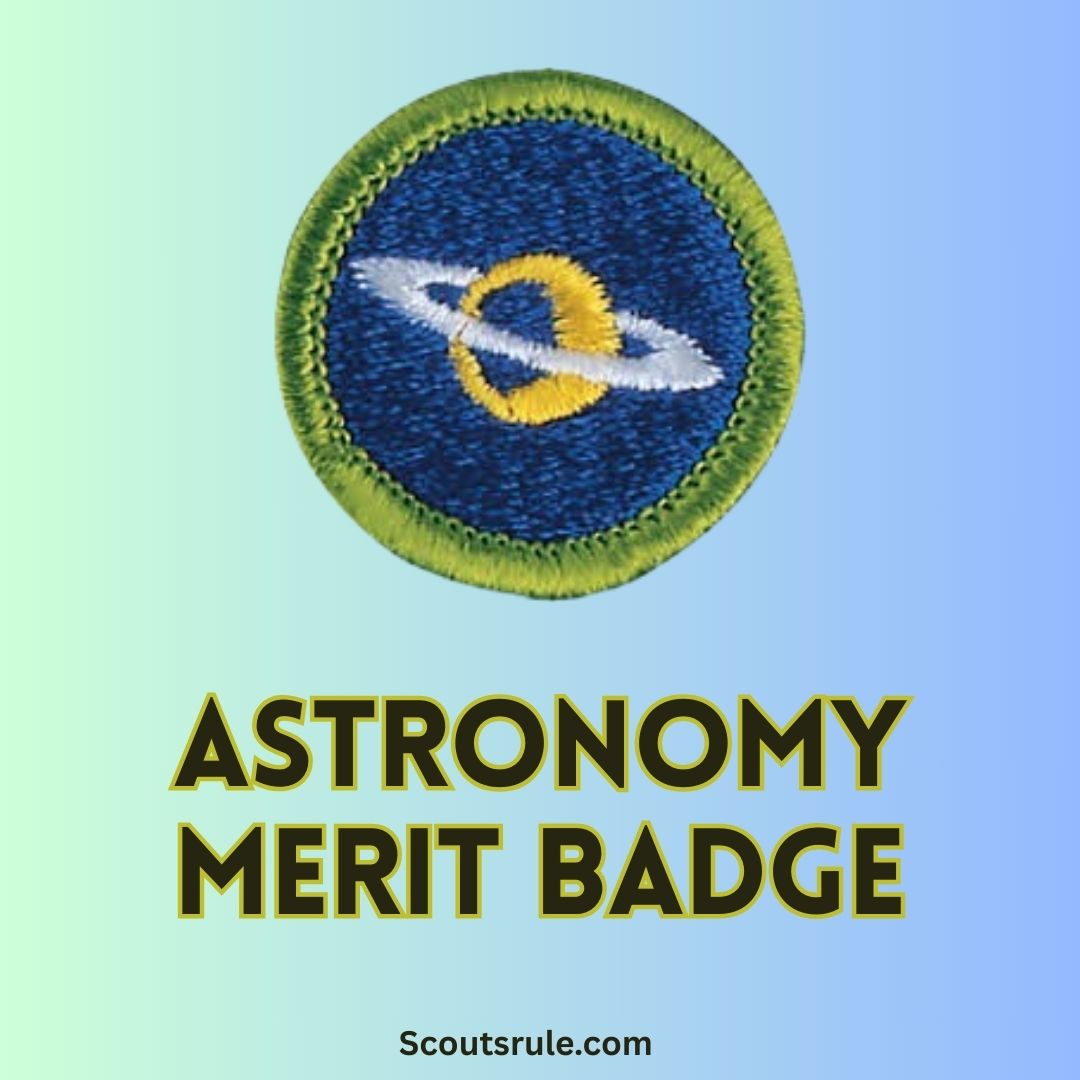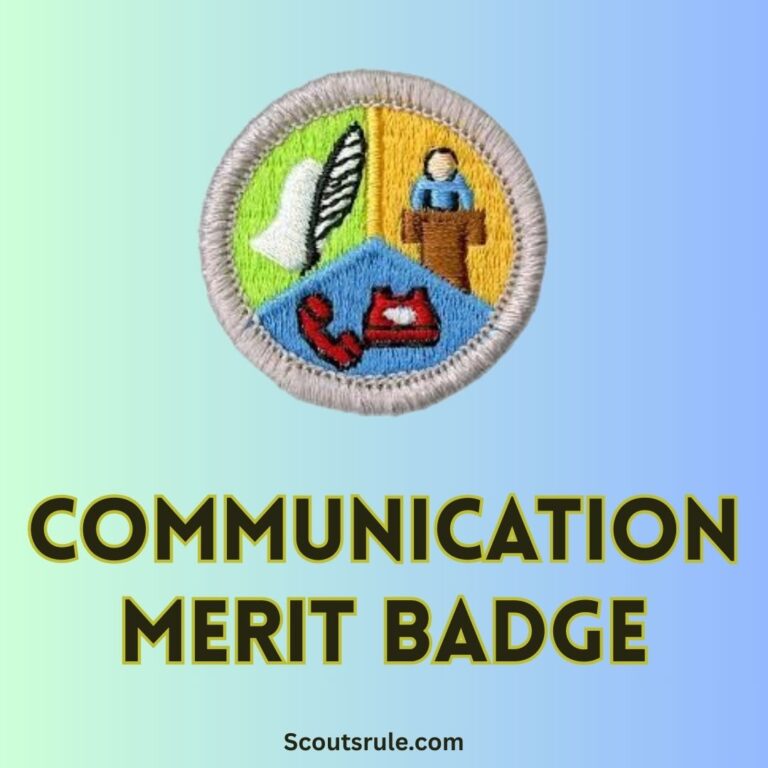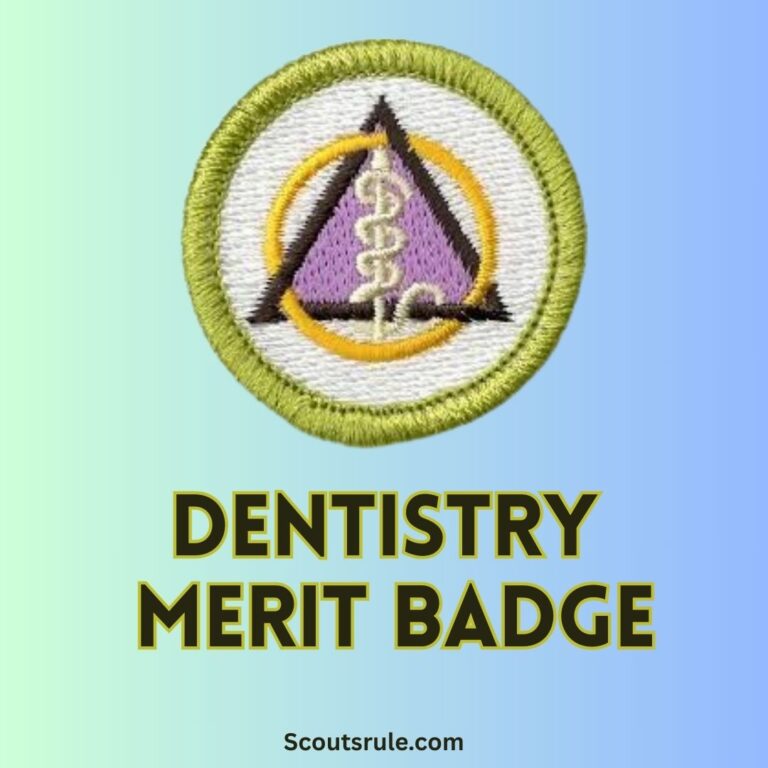
Below is a comprehensive guide to the Astronomy Merit Badge that is designed to help you explore the wonders of the universe, build hands-on observation skills, and gain an appreciation for the science of astronomy. This guide will walk you through every major requirement—from understanding the origins of the cosmos and learning about essential astronomical tools to safely observing celestial objects and recording your findings. Whether you are new to astronomy or have already spent many evenings under the stars, this guide provides practical project ideas, detailed explanations, and tips for documentation, reflection, and effective communication with your merit badge counselor.
Post Contents
- Introduction: Reconnecting with the Cosmos
- 2. Purpose and Objectives of the Astronomy Merit Badge
- 3. Understanding the Cosmos: Basic Concepts in Astronomy
- 4. Safety and Responsible Observing
- 5. Essential Tools for Backyard Astronomy
- 6. Observing Techniques and Celestial Measurements
- 7. Solar Observations and Special Considerations
- 8. Recording and Documenting Observations
- 9. Supplementary Projects and Field Experiences
- 10. Integrating Astronomy with Broader Scientific Inquiry
- 11. Conclusion: Inspiring a Lifelong Passion for the Stars
- 12. Additional Tips and Resources
- Final Thoughts
Introduction: Reconnecting with the Cosmos
For millennia, humans have looked up at the stars with wonder. Astronomy—the study of celestial objects and phenomena—not only reveals the mysteries of the universe but also helps us understand our place in it. The Astronomy Merit Badge invites you to rediscover the night sky and delve into the scientific, artistic, and historical dimensions of astronomy. Whether you’re mapping constellations, observing the gentle glow of the Milky Way, or tracking the phases of the Moon, this badge challenges you to reconnect with the cosmos and develop a lifelong passion for exploring the universe.
By earning the Astronomy Merit Badge, you gain practical skills, deepen your scientific knowledge, and become an informed observer who can share the beauty of the heavens with others.
2. Purpose and Objectives of the Astronomy Merit Badge
The primary objectives of the badge are designed to ensure a well-rounded understanding of astronomy through hands-on experience and critical inquiry. Key goals include:
- Educational Growth: Gain a solid understanding of astronomical phenomena, observation techniques, celestial mechanics, and the history of astronomy.
- Practical Experience: Learn to use essential tools—such as binoculars, telescopes, and star charts—to safely observe and record celestial objects.
- Safety and Responsibility: Understand proper methods for observing the Sun and other bright objects without damaging your eyes, and learn how to observe safely outdoors under various weather conditions.
- Documentation Skills: Develop a detailed observation log that includes sketches, photographs, and written reflections. This documentation will serve as a record of your learning and progress.
- Communication and Presentation: Prepare a final presentation or report on your astronomical findings and experiences, demonstrating both depth of understanding and the ability to share your insights clearly.
- Inspiration for Lifelong Learning: Cultivate a love for the night sky and inspire others in your community to look upward and explore the wonders of the universe.
These objectives interconnect to promote not only technical proficiency in astronomy but also a broader appreciation for scientific inquiry and the natural world.
3. Understanding the Cosmos: Basic Concepts in Astronomy
Before setting out for your nighttime observations, you must develop a foundational understanding of astronomical principles.
3.1 What Is Astronomy?
At its most fundamental level, astronomy is the scientific study of celestial objects and the phenomena that occur beyond Earth’s atmosphere. It encompasses:
- Celestial Bodies: From stars, planets, moons, and comets to galaxies, nebulae, and black holes.
- Cosmology: The study of the universe as a whole, including its origins, evolution, and large-scale structure.
- Observational Astronomy: Techniques and tools used to observe and measure celestial events, which help scientists understand the physical properties and behavior of these objects.
Understanding these basic definitions helps set the stage for a deeper dive into the practical skills involved in astronomical observation.
3.2 The Universe: Stars, Planets, and Galaxies
A brief overview of the main components of the universe includes:
- Stars and Constellations: Learn how stars are formed, the differences between various types of stars, and how constellations are used as ancient navigational tools.
- Planets and the Solar System: Understand the structure of our solar system, the criteria for a celestial body to be considered a planet, and the unique characteristics of each planet.
- Galaxies and Deep-Sky Objects: Explore the vast structures that make up the universe, from our own Milky Way to distant galaxies and clusters of stars.
By familiarizing yourself with these topics, you are better prepared to identify and understand what you see when you look at the night sky.
4. Safety and Responsible Observing
Astronomy is a rewarding pursuit; however, it comes with specific safety challenges, particularly when you observe at night or when working with powerful optical devices.
4.1 General Safety During Astronomical Observations
- Field Safety: When planning to observe outside, especially in rural or remote areas, always let someone know your location and expected return time. Bring a flashlight with a red filter (to preserve night vision), a cell phone, and sufficient warm clothing if observing in cold weather.
- Environmental Precautions: Be aware of uneven terrain, potential wildlife encounters, and weather changes. Always observe in groups or with a buddy when possible.
4.2 Protecting Your Eyes
One of the most critical safety issues is solar observation:
- Never Look Directly at the Sun: Without proper solar filters, direct observation of the Sun can cause permanent damage to your eyes. Only use indirect viewing methods such as projection techniques, or specialized solar telescopes.
- Safe Solar Observation: If your project involves observing the Sun, always discuss the safety procedures with your merit badge counselor and adhere to the recommended guidelines. Use certified solar filters or projection methods to safely study sunspots and other solar phenomena.
Understanding these safety measures ensures you enjoy astronomy without endangering your health.
5. Essential Tools for Backyard Astronomy
Astronomy relies on specialized tools that enhance your ability to observe and study celestial objects.
5.1 Binoculars: An Accessible Entry to the Night Sky
- Advantages of Binoculars: Binoculars are a great starting point for beginners. They are portable, inexpensive, and allow you to scan wide areas of the sky quickly.
- Using Binoculars Effectively: Learn proper focusing techniques. Practice observing objects like the Moon, star clusters, and nebulae. Note that binoculars are ideal for capturing a broad view but might not offer the detailed resolution a telescope can.
5.2 Telescopes: Types, Components, and Basic Use
- Types of Telescopes: Common types include refractors, which use lenses; reflectors, which use mirrors; and compound (or catadioptric) telescopes that combine both. Each has advantages depending on your observational goals.
- Essential Components: Understand the roles of the mount, eyepiece, focuser, and tracking systems. Learn how to set up a telescope, align it, and use its tracking feature to follow celestial objects as the Earth rotates.
- Maintenance and Storage: Proper care for your telescope is essential. Clean the optics only when necessary, store the instrument in a cool, dry place, and cover it when not in use to prevent dust accumulation.
5.3 Star Charts, Mobile Apps, and Other Resources
- Star Charts and Sky Maps: Use printed or digital star charts to identify constellations, stars, and planets. These charts change with the seasons, so be sure you are using one that is relevant for the time of your observation.
- Mobile Applications: Many modern apps, such as Stellarium or SkySafari, allow you to view a simulated night sky, complete with explanations of different celestial objects. These tools can guide you during your observations and help you locate objects of interest.
- Additional Accessories: A red-light flashlight preserves your night vision. Consider also an observation notebook for sketches and written notes.
6. Observing Techniques and Celestial Measurements
To make the most of your astronomical observations, employ techniques that enhance your ability to identify and record what you see.
6.1 Identifying and Sketching Constellations
- Constellation Recognition: Begin by learning at least 10 constellations, including four of the zodiac. The Big Dipper and Orion are great starting points. Use star charts and mobile apps to help locate them.
- Sketching the Sky: Practice making detailed sketches of constellations. For example, draw the Big Dipper at two different times of the night (early evening and later in the night) to capture its movement relative to the North Star and the horizon.
- Record the Details: Note the date, time, and location when you make each sketch. Record any changes in the appearance of constellations as the Earth rotates.
6.2 Observing the Milky Way and Deep-Sky Objects
- The Milky Way: Learn what the Milky Way looks like in a dark, clear sky. Note its overall band-like structure and how light pollution affects its visibility.
- Deep-Sky Objects: Identify bright nebulae, star clusters, and galaxies that can be seen with binoculars or a telescope. Document your observations by describing what you see and taking note of any distinguishing features.
6.3 Tracking Planetary Motion and Phases
- Planetary Identification: Learn to identify at least five of the most visible planets. Use current sky charts (or a reliable app) to know when each will be visible in the evening sky.
- Observing Phases: Some planets, like Venus, go through phases similar to the Moon. Observe and record how these phases change over time.
- Creating a Chart: Construct a chart or table that shows when each of the five planets is observable during the coming 12 months. Record your observations of any noticeable motion in the night sky, noting how planets “wander” against the backdrop of fixed stars.
7. Solar Observations and Special Considerations
Solar astronomy presents unique challenges and requires extra precaution:
- Safe Solar Observation: Never look directly at the Sun without specialized equipment. Learn and practice safe solar observation methods—using solar viewers, filters, or projection techniques.
- Observing the Moon: The Moon is one of the most accessible celestial objects. Create detailed sketches of its surface features, noting major seas (maria) and craters with accurate labels.
- Understanding Colors and Star Ratings: Discuss the significance of star colors and brightness in spectral classification. This can lead to an understanding of stellar evolution and distances.
8. Recording and Documenting Observations
Accurate documentation is vital for demonstrating your progress and understanding of astronomical phenomena.
8.1 Journals, Sketches, and Photographs
- Observation Journal: Keep a dedicated notebook or digital journal to log every observation session. Include:
- Date, time, and location.
- Conditions (weather, light pollution levels).
- Detailed sketches of constellations, the Moon, or observed planets.
- Written descriptions of your observations.
- Photographic Records: If you have access to a camera or smartphone, take photos of the night sky, your equipment setup, and any noteworthy celestial images. These images complement your sketches and written records.
8.2 Organizing Your Portfolio
- Digital/Physical Portfolio: Keep all materials neatly organized. Use dividers or digital folders labeled by date or topic (e.g., “Constellations,” “Planetary Observations,” “Solar Safety”).
- Summary Reports: Periodically write a summary of your progress, emphasizing what you learned and any new questions or interests that have emerged.
- Feedback and Reflection: Ask your merit badge counselor for feedback on your documentation. Reflect on suggestions and update your records continuously.
9. Supplementary Projects and Field Experiences
To enhance your learning, consider engaging in some additional astronomy projects:
- Star Parties and Observation Nights: Attend organized star parties or public observation events hosted by local astronomical societies. These events allow you to network with experienced amateur astronomers and get exposure to different types of equipment.
- Visits to Planetariums or Observatories: These field trips enable you to experience professional-grade telescopes and gain in-depth presentations from experts.
- Astronomy Clubs: Join a local astronomy club to participate in group observation sessions. Sharing experiences with others can expand your knowledge and offer new problem-solving approaches.
- Online Forums and Workshops: Participate in online communities such as Cloudy Nights or related subreddits where you can ask questions and share insights with other astronomy enthusiasts.
10. Integrating Astronomy with Broader Scientific Inquiry
Astronomy is an interdisciplinary science that overlaps with physics, chemistry, and environmental studies. Consider these additional layers:
- Physics of the Universe: Explore how gravity, electromagnetism, and nuclear fusion power stars and dictate planetary motion.
- Astrobiology: Investigate how conditions on Earth compare to those on other planets, and discuss what makes a planet suitable for life.
- Impact of Technology: Learn how advancements in telescope technology, computer imaging, and data acquisition have transformed modern astronomy.
- Environmental Light Pollution: Discuss how urban development affects astronomical observations and what can be done to promote dark-sky initiatives.
These areas of inquiry not only enrich your astronomical knowledge but also help you appreciate how astronomy drives progress across multiple scientific fields.
11. Conclusion: Inspiring a Lifelong Passion for the Stars
Earning the Astronomy Merit Badge is a transformative journey into the cosmos. Through your hands-on observations, careful research, and thoughtful reflection, you’ll not only master the technical aspects of stargazing but also cultivate an enduring connection with the universe. Every sketch, photograph, and observation recorded in your notebook serves as a window into the vast, awe-inspiring complexity of the cosmos—and into your own growth as a curious, dedicated learner.
By safely observing celestial objects, learning to navigate using star charts and mobile apps, and understanding the science behind the formation and evolution of celestial bodies, you’ll have laid the groundwork for further exploration in science. In addition, reflecting on the ethical and environmental aspects of astronomy can inspire you to become an advocate for preserving our planet’s ability to provide a pristine view of the night sky.
May this journey not only enrich your scientific knowledge but also inspire you to share the wonder of the cosmos with others. Embrace every observation, experiment, and challenge as a stepping stone toward a lifetime of inquiry and passion for the stars.
Happy stargazing, and may the beauty of the universe continue to inspire you to explore, create, and grow as both a scientist and a citizen of the cosmos.
12. Additional Tips and Resources
Additional Tips
- Schedule Regular Observation Sessions: Consistency is key to mastering astronomical observation. Plan your sessions when the conditions are optimal—clear, dark skies free of significant light pollution.
- Be Patient: The night sky requires dedication. Allow yourself time to learn the layout of the heavens and don’t be discouraged if your first sketches are rough or your observations incomplete.
- Network with Other Astronomy Enthusiasts: Participate in local astronomy clubs, online forums, or school clubs. Sharing ideas and experiences can provide practical tips and motivate you further.
- Prepare a Backup Plan: Weather can be unpredictable. Have indoor activities ready (such as studying star charts or watching astronomy documentaries) to supplement outdoor observation sessions.
Resources
- Star Charts and Mobile Apps: Utilize online resources such as Stellarium, SkySafari, or similar apps that provide real-time star maps.
- Books and Documentaries: Explore classic texts on astronomy as well as modern guides. Documentaries produced by networks like National Geographic and PBS can offer visually engaging insights into the universe.
- Local Observatories and Planetariums: Many of these institutions offer public tours and observation nights, which provide a fantastic learning environment.
- Websites: Refer to reputable sites such as NASA.gov, the European Space Agency (ESA), and academic institutions’ astronomy departments for the latest discoveries and updates.
Keep these resources handy as you build your portfolio and continue to expand your knowledge beyond the merit badge requirements.
Final Thoughts
The exploration of the cosmos is a never-ending adventure. With every observation, you gain a deeper appreciation for how vast, mysterious, and interconnected our universe truly is. The Astronomy Merit Badge is an invitation to dive into this exploration with curiosity and respect. As you learn to balance practical observation skills with a solid scientific foundation, you transform your relationship with the night sky—from seeing distant points of light into a dynamic, living tapestry of stellar wonders.
This badge not only equips you with the technical skills needed for observational astronomy but also nurtures a perspective of wonder and inquiry, urging you to ask big questions about our existence, the fate of the universe, and the tiny yet intricate part each of us plays in the cosmos.
May your journey through the Astronomy Merit Badge ignite a passion for lifelong learning, deepen your understanding of the natural world, and inspire you to always look up with awe, curiosity, and a readiness to explore.
Happy stargazing, and may the universe continue to reveal its secrets to you!

Hi, Robin here, A former lead Scout and here I share my inspiring stories about USA Scouts, leadership, adventure, how to guides and more.






